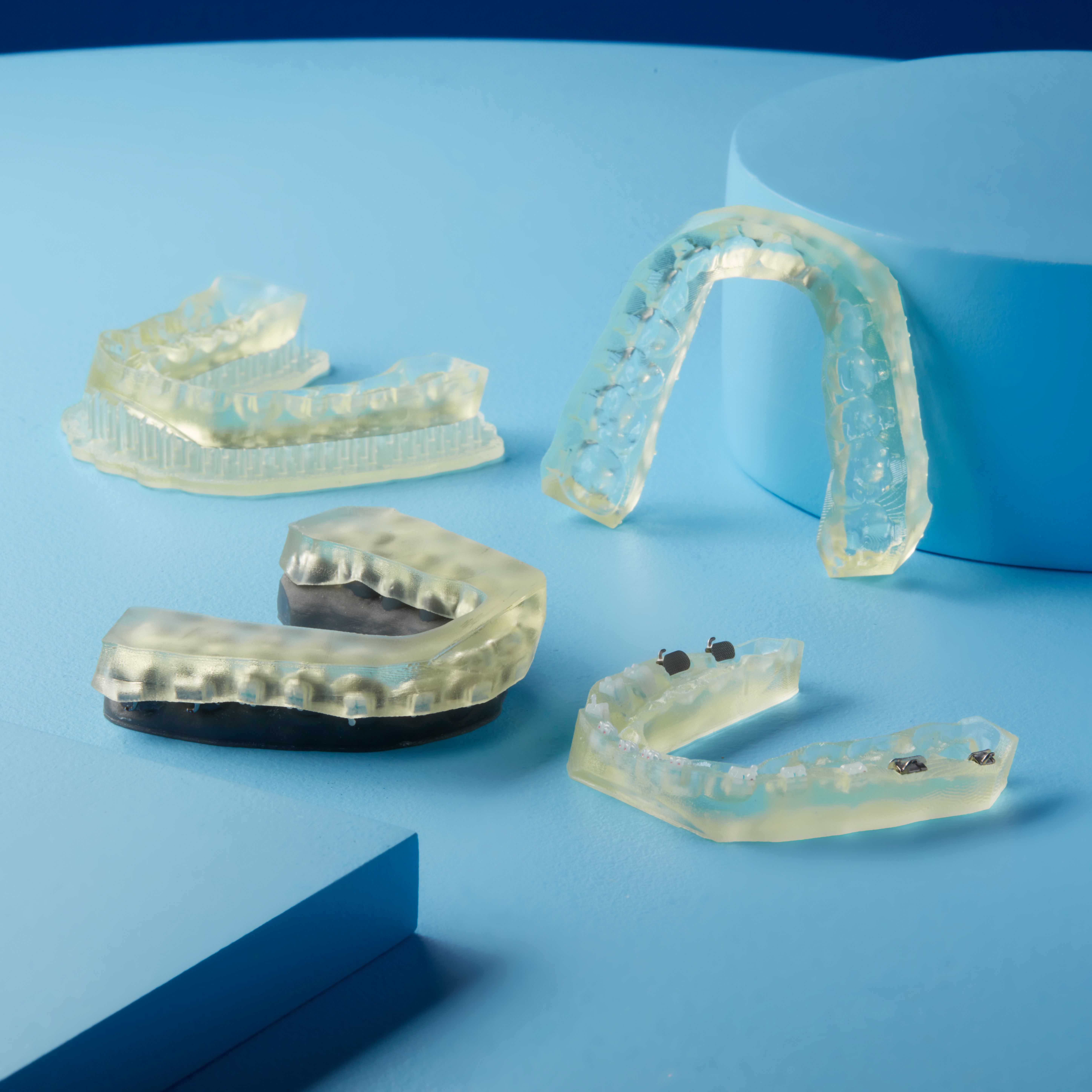New IBT Resin Expands Formlabs’ Suite of 3D Printing Materials
Materials line now expanded and designed to save time and effort for orthodontic professionals.

Formlabs’ new IBT Resin is formulated for the direct printing of indirect bonding trays to simplify orthodontic bracket placement. Alongside materials like Draft Resin for rapid production of models, Formlabs now offers a comprehensive suite of 3D printing materials designed to save time, money, and effort for orthodontic professionals.
3D Printing Benefits in Orthodontics
Digital technology began transforming orthodontics more than a decade ago. With the widespread adoption of 3D printing for clear aligner production, the industry has begun an era of affordable mass-customized appliances that make treatment deliveries faster, easier, and more comfortable for both professionals and patients.
Clear aligners continue to gain popularity with patients, as the discretion of so-called “invisible braces” appeals to both adults and adolescents. Meanwhile, technology enables practitioners to create aligners in-house, making this treatment plan financially viable for more patients.
However, clear aligners continue to have clinical limitations, and in many cases traditional orthodontic treatment with brackets is still indicated and the preferable option.
Now, 3D printed indirect bonding trays are bringing labor and cost savings to bracket placement procedures.
Save Time, Money on Bracket Placement
An indirect bonding tray (referred to here as IBT, but also often shortened to IDB or referred to as transfer trays) is a custom-made appliance that precisely matches each patient’s dentition and bracket prescription to place multiple brackets at once. Since the preparation and careful placement can be done in advance virtually, patient chair time can be cut in half , saving the orthodontist valuable time.
Compared to other 3D printing resins for making IBTs, Formlabs IBT Resin offers optimized tear strength, translucency, and flexibility. Appliances printed in our resin are easier to use chairside, saving more time and money for the practice.
Features include:
- Enhanced color for clear visualization of brackets against teeth for no-fuss chairside use with less error.
- Finished appliances that are tasteless, odorless, and not sticky; comfortable experience for the patient.
- Minimal support material needed, which means less waste and fewer post-processing steps.
- No need for glycerin or nitrogen post-curing; easy and hassle-free post-processing.
This Class I compliant resin was tested rigorously by Formlabs and industry experts. Beta testers liked the material’s accuracy, printability, and easy chairside use, according to the company. Dr. Lisa Alvetro, an orthodontist in private practice in Sidney, Ohio, beta tested the resin before its release.
“Clinically, I found indirect bonding trays printed using Formlabs IBT Resin to be accurate, easy to place and remove,” Dr Alvetro says.
She adds that she has found that digital workflows like 3D printing allow her to delegate a lot of the day-to-day work to highly capable staff, such as Patricia Mitchell, a specialist in all the digital workflows used in their orthodontic practice.
"With several years of experience in printing indirect bonding trays, I found the Formlabs IBT Resin to be accurate and easy to print using the PreForm software,” Mitchell says. “I love that the Formlabs IBT Resin has very minimal odor. The printed indirect bonding trays are effortless to remove from the build platform and the post processing steps are very simple to follow.”
How to Work With IBT Resin
For an orthodontic practice or lab that already uses digital tools, working with IBT Resin is said to be easy.
With an intraoral scan and digital treatment plan, an orthodontist, technician, or assistant can generate the 3D model of an IBT in just a few minutes in any of several orthodontic design software programs. This file, exported as an STL, can be imported directly into Formlabs’ easy-to-use PreForm software and prepared for printing.
3D printing a part on a Formlabs SLA printer is a hands-off process. Once the printer is configured with the resin cartridge, resin tank, and build platform, and the 3D file is uploaded to the computer via Wi-Fi, ethernet, or USB cable, the print begins with a simple push of a button, and it doesn’t need any further attention until the print is complete.
After the part is printed, it needs to be post-processed, including washing in ≥96% isopropyl alcohol and post-curing. These steps can be automated with Form Wash and Form Cure . After curing, the IBT is complete, and can be cleaned, disinfected, and cared for with tools commonly found in orthodontic offices.